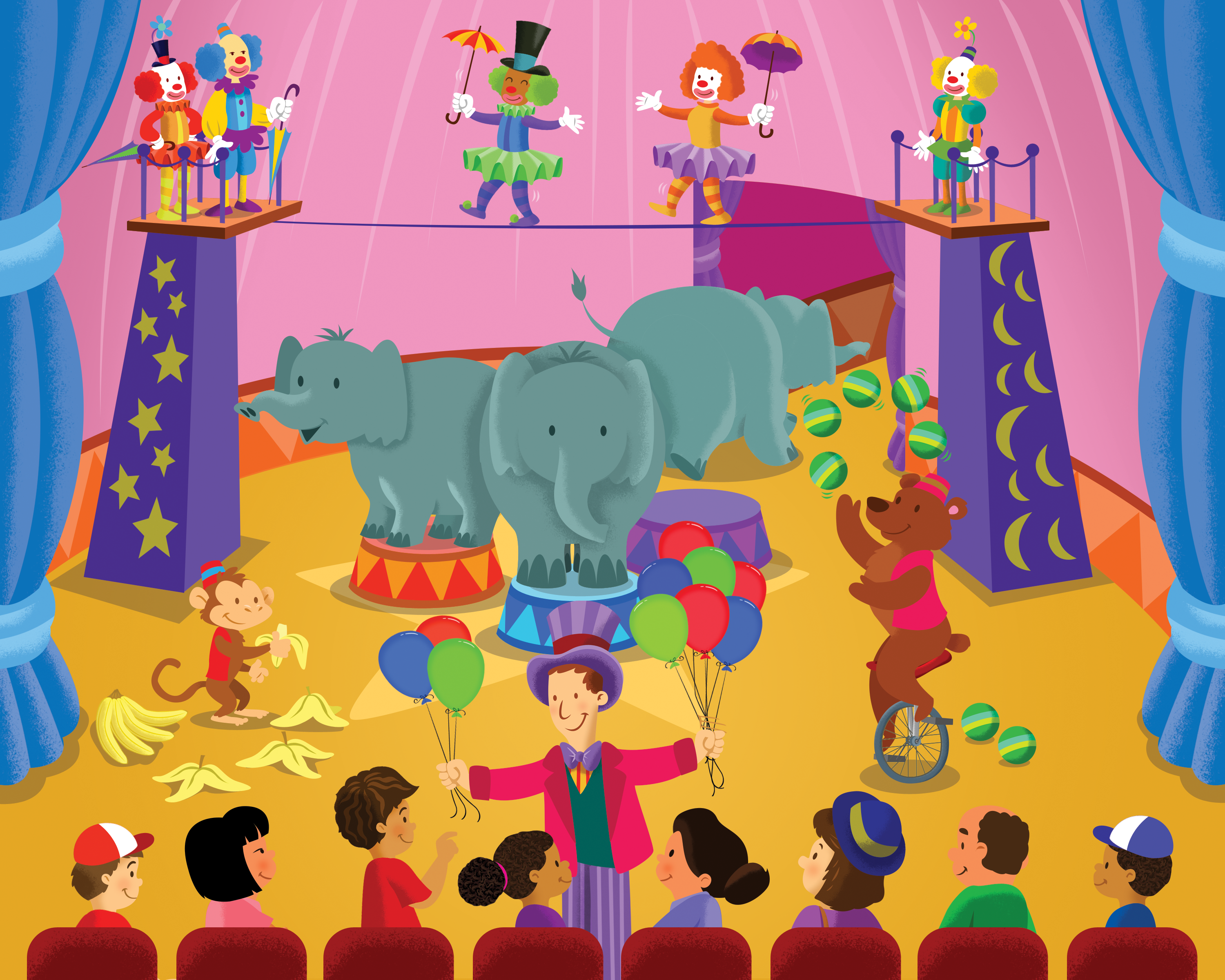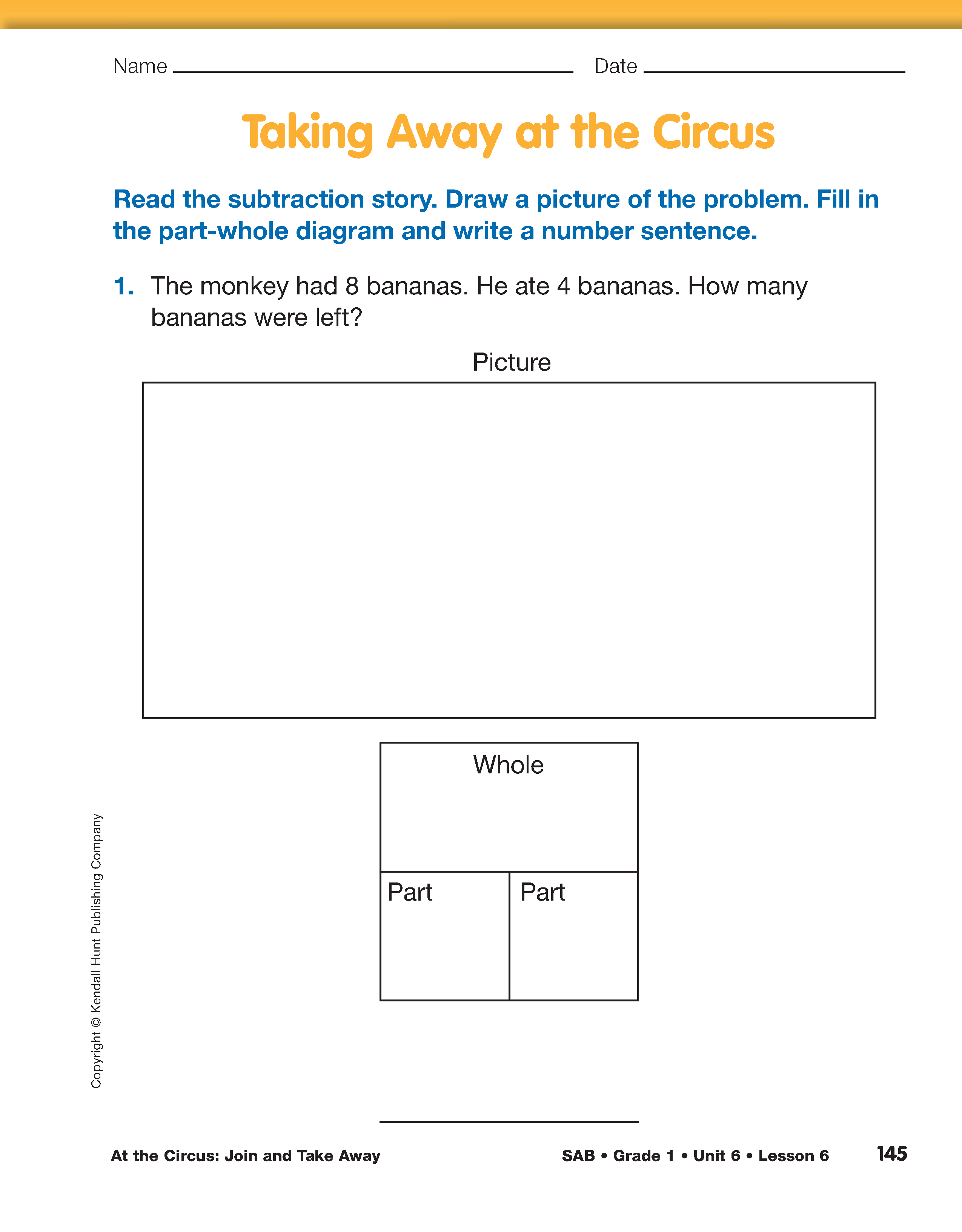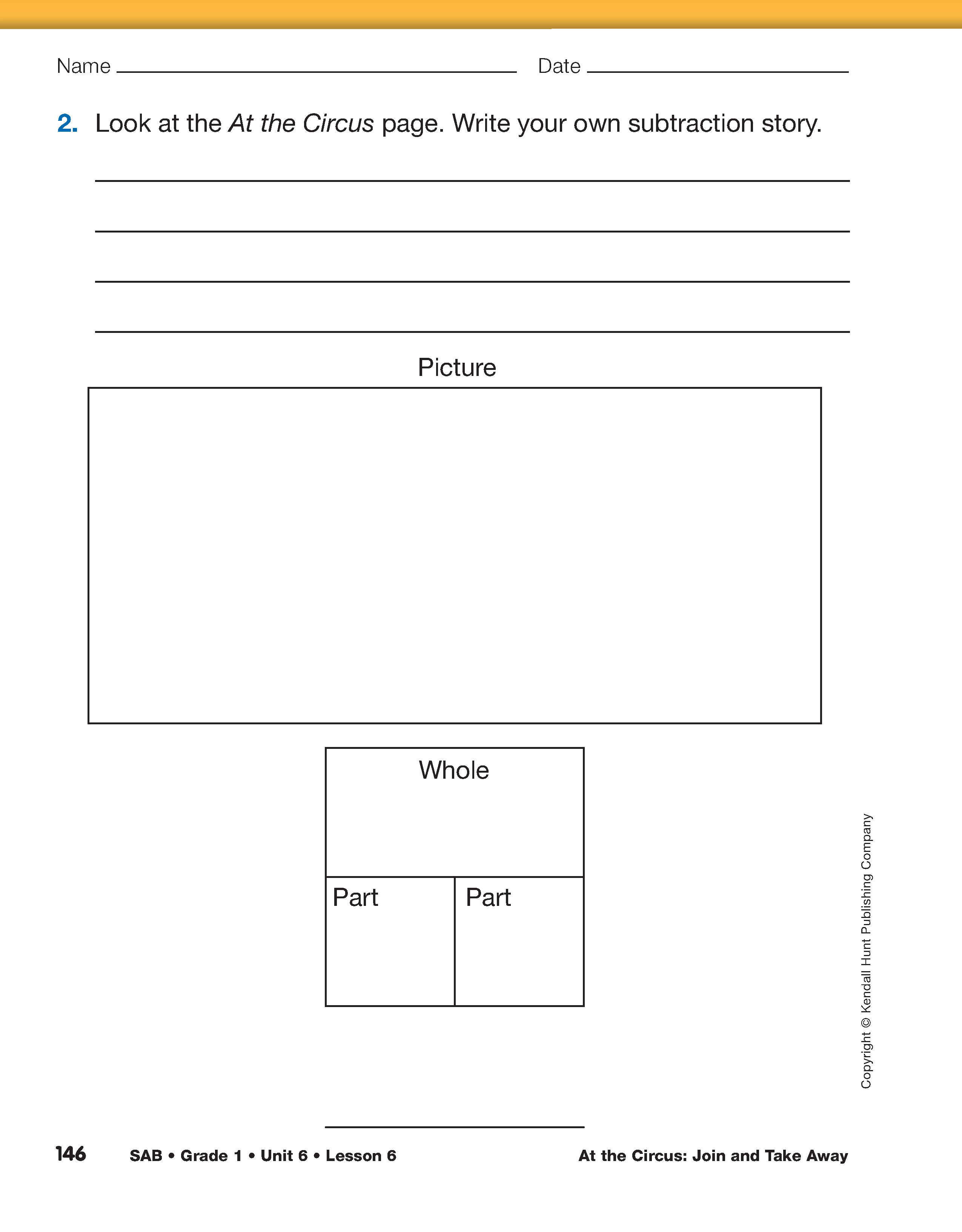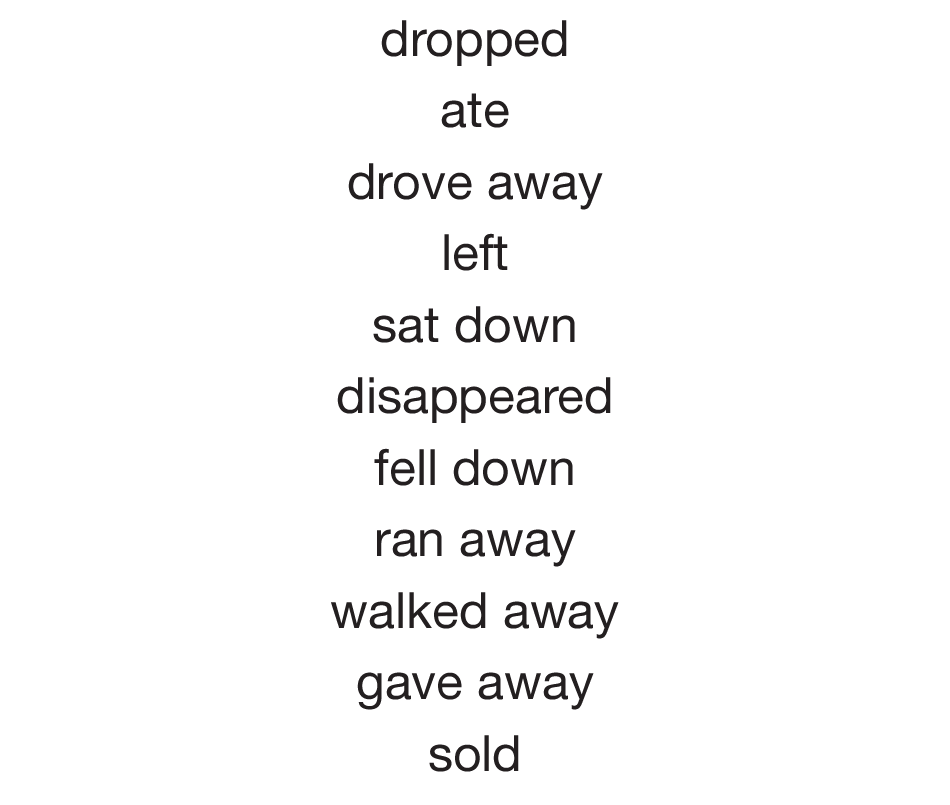At the Circus: Join and Take Away
Est. Class Sessions: 2Developing the Lesson
Part 1: Connecting Addition and Subtraction Problems
Direct students to look at the display of the At the Circus page from Lesson 3 or in the Adventure Book as you read the addition story below. See Materials Preparation.
Ask:
Select a student to model the situation using cubes on the display of the Part-Whole Diagram and Number Sentences Master.
Ask:
Ask students to help you change the addition story to a subtraction story. Direct students to use the part-whole diagram and the number sentences for the addition story to help you write a subtraction story related to the addition story. Use the display of the Taking Away at the Circus page Question 2 to model how to write the subtraction story. See the Sample Dialog for a guide for this discussion.
The following subtraction story is an example:
Ask students to think of a number sentence and to determine what numbers go in the part-whole diagram.
Ask:
Discuss other examples of take away or separate situations depicted in the At the Circus page. As students describe what they see in the picture, write them on a chart or display. The following is a list of some examples:
- the elephants with one going away
- the balloon man selling three balloons
- the juggling bear losing two balls
- the monkey eating four bananas
Explain to students that they will work in pairs on the Taking Away at the Circus pages in the Student Activity Book. For Question 1, they read and draw a picture for the subtraction story, fill in the part-whole diagram and write a number sentence. For Question 2, they write and draw a picture of their own subtraction story, fill in the part-whole diagram and write a number sentence. Before they start, ask students to look at the At the Circus page and generate a list of words they may need in writing their subtraction stories. On a chart or other display, write this list as well as a list of common take-away or separate words. See Figure 2 for a sample list.
To guide student pairs as they write their own number stories, ask:
Have copies of the Part-Whole Diagram and Number Sentences Master, connecting cubes, number lines, and ten frames readily available to help students solve their subtraction problems.
After students write their subtraction stories, have some of the student pairs read their number stories and ask other students to solve the problems. Ask students to fill in the display of the Part-Whole Diagram and Number Sentences Master and describe how they solved the story problem.




















